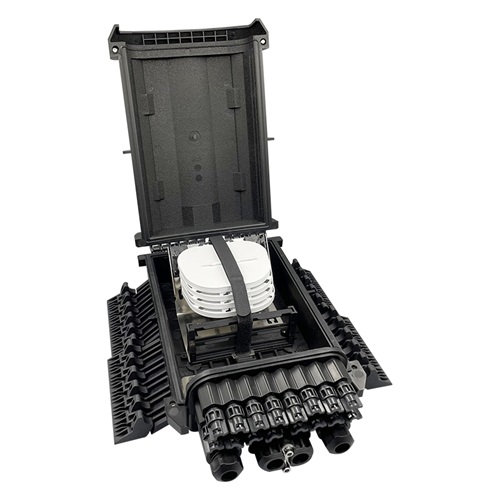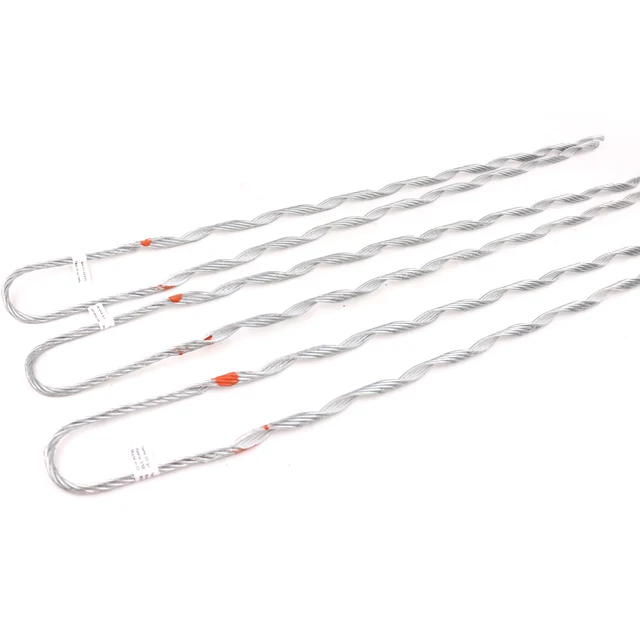Armored Optic Cable GYFXTS
Armored Optic Cable
GYFXTS
Product Features
1. Small size and light weight, with good bending resistance performance easy to installation.
2. High strength loose tube material with good performance of hydrolysis resistant, special tube filling compound ensure a critical protection of fiber.
3. Full section filled, cable core wrapped longitudinally with corrugated steel plastic tape enhancing moisture-proof.
4. Cable core wrapped longitudinally with corrugated steel plastic tape enhancing crush resistance.
5. All selection water blocking construction, provide good performance of moisture-proof and water block.
6. Special filling gel filled loose tubes provide perfect optical fiber protection.
7. Strict craft and raw material control enable lifespan over 30 years.
Specification
The cables are mainly designed for digital or analog transmission communication and rural communication system. The products are suitable for aerial installation, tunnel installation or direct buried.
|
ITEMS |
DESCRIPTION |
||
|
Fiber Count |
2 ~ 16F |
24F |
|
|
Loose Tube |
OD(mm): |
2.0 ± 0.1 |
2.5± 0.1 |
|
Material: |
PBT |
||
|
Armored |
Corrugation Steel tape |
||
|
Sheath |
Thickness: |
Non. 1.5 ± 0.2 mm |
|
|
Material: |
PE |
||
|
OD of cable (mm) |
6.8 ± 0.4 |
7.2 ± 0.4 |
|
|
Net weight ( kg/km) |
70 |
75 |
|
Specification
FIBER IDENTIFICATION
|
NO. |
1 |
2 |
3 |
4 |
5 |
6 |
7 |
8 |
9 |
10 |
11 |
12 |
|
Tube Color |
Blue |
Orange |
Green |
Brown |
Slate |
White |
Red |
Black |
Yellow |
Violet |
Pink |
Aqua |
|
NO. |
1 |
2 |
3 |
4 |
5 |
6 |
7 |
8 |
9 |
10 |
11 |
12 |
|
Fiber Color
NO.
Fiber Color |
Blue |
Orange |
Green |
Brown |
Slate |
White/ natural |
Red |
Black |
Yellow |
Violet |
Pink |
Aqua |
|
13. |
14 |
15 |
16 |
17 |
18 |
19 |
20 |
21 |
22 |
23 |
24 |
|
|
Blue +Black point |
Orange+ Black point |
Green+ Black point |
Brown+ Black point |
Slate+B lack point |
White+ Black point |
Red+ Black point |
Black+ White point |
Yellow+ Black point |
Violet+ Black point |
Pink+ Black point |
Aqua+ Black point |
OPTICAL FIBER
1.Single Mode Fiber
|
ITEMS |
UNITS |
SPECIFICATION |
|
Fiber type |
|
G652D |
|
Attenuation |
dB/km |
1310 nm≤ 0.36 1550 nm≤ 0.22 |
|
Chromatic Dispersion |
ps/nm.km |
1310 nm≤ 3.5 1550 nm≤ 18 1625 nm≤ 22 |
|
Zero Dispersion Slope |
ps/nm2.km |
≤ 0.092 |
|
Zero Dispersion Wavelength |
nm |
1300 ~ 1324 |
|
Cut-off Wavelength (lcc) |
nm |
≤ 1260 |
|
Attenuation vs. Bending (60mm x100turns) |
dB |
(30 mm radius,100 rings )≤ 0.1 @ 1625 nm |
|
Mode Field Diameter |
mm |
9.2 ± 0.4 at 1310 nm |
|
Core-Clad Concentricity |
mm |
≤ 0.5 |
|
Cladding Diameter |
mm |
125 ± 1 |
|
Cladding Non-circularity |
% |
≤ 0.8 |
|
Coating Diameter |
mm |
245 ± 5 |
|
Proof Test |
Gpa |
≥ 0.69 |
2.Multi Mode Fiber
|
ITEMS |
UNITS |
SPECIFICATION |
|||||||
|
62.5/125 |
50/125 |
OM3-150 |
OM3-300 |
OM4-550 |
|||||
|
Fiber Core Diameter |
μm |
62.5 ± 2.5 |
50.0 ± 2.5 |
50.0 ± 2.5 |
|||||
|
Fiber Core Non-circularity |
% |
≤ 6.0 |
≤ 6.0 |
≤ 6.0 |
|||||
|
Cladding Diameter |
μm |
125.0 ± 1.0 |
125.0 ± 1.0 |
125.0 ± 1.0 |
|||||
|
Cladding Non-circularity |
% |
≤ 2.0 |
≤2.0 |
≤ 2.0 |
|||||
|
Coating Diameter |
μm |
245 ± 10 |
245 ± 10 |
245 ± 10 |
|||||
|
Coat-Clad Concentricity |
μm |
≤ 12.0 |
≤ 12.0 |
≤12.0 |
|||||
|
Coating Non-circularity |
% |
≤ 8.0 |
≤ 8.0 |
≤ 8.0 |
|||||
|
Core-Clad Concentricity |
μm |
≤ 1.5 |
≤ 1.5 |
≤ 1.5 |
|||||
|
Attenuation |
850nm |
dB/km |
3.0 |
3.0 |
3.0 |
||||
|
1300nm |
dB/km |
1.5 |
1.5 |
1.5 |
|||||
|
OFL |
850nm |
MHz﹒ km |
≥ 160 |
≥ 200 |
≥ 700 |
≥ 1500 |
≥ 3500 |
||
|
1300nm |
MHz﹒ km |
≥ 300 |
≥ 400 |
≥ 500 |
≥ 500 |
≥ 500 |
|||
|
The biggest theory numerical aperture |
/ |
0.275 ± 0.015 |
0.200 ± 0.015 |
0.200 ± 0.015 |
|||||
Mechanical and Environmental Performance of the Cable
|
NO. |
ITEMS |
TEST METHOD |
ACCEPTANCE CRITERIA |
|
1 |
Tensile Loading Test |
#Test method: IEC 60794-1-E1 -. Long-tensile load: 500 N -. Short-tensile load: 1000 N -. Cable length: ≥ 50 m |
-. Attenuation increment@1550 nm: ≤ 0.1 dB -. No jacket cracking and fiber breakage |
|
2 |
Crush Resistance Test |
#Test method: IEC 60794-1-E3 -.Long load: 1000 N/100mm -.Short load: 2000 N/100mm Load time: 1 minutes |
-. Attenuation increment@1550 nm: ≤ 0.1 dB -. No jacket cracking and fiber breakage |
|
3 |
Impact Resistance Test |
#Test method: IEC 60794-1-E4 -.Impact height: 1 m -.Impact weigh: 450 g -.Impact point: ≥ 5 -.Impact frequency: ≥ 3/point |
-. Attenuation increment@1550 nm: ≤ 0.1 dB -. No jacket cracking and fiber breakage |
|
4 |
Repeated Bending |
#Test method: IEC 60794-1-E6 -.Mandrel diameter: 20 D (D = cable diameter) -.Subject weight: 15 kg -.Bending frequency: 30 times -.Bending speed: 2 s/time |
-. Attenuation increment@1550 nm: ≤ 0.1 dB -. No jacket cracking and fiber breakage |
|
5 |
Torsion Test |
#Test method: IEC 60794-1-E7 -.Length: 1 m -.Subject weight: 25 kg -.Angle: ± 180 degree -.Frequency: ≥ 10/point |
-. Attenuation increment@1550 nm: ≤0.1 dB -. No jacket cracking and fiber breakage |
|
6 |
Water Penetration Test |
#Test method: IEC 60794-1-F5B -.Height of pressure head: 1 m -.Length of specimen: 3 m -.Test time: 24 hours |
-. No leakage through the open cable end |
|
7 |
Temperature Cycling Test |
#Test method: IEC 60794-1-F1 -.Temperature steps: + 20℃,- 40℃,+ 70℃,+ 20℃ -.Testing Time: 24 hours/step -.Cycle index: 2 |
-. Attenuation increment@1550 nm: ≤ 0.1 dB -. No jacket cracking and fiber breakage |
|
8 |
Drop Performance |
#Test method: IEC 60794-1-E14 -.Testing length: 30 cm -.Temperature range: 70 ±2℃ -.Testing Time: 24 hours |
-. No filling compound drop out |
|
9 |
Temperature |
Operating: -40℃~+70℃ Store/Transport: -40℃~+70℃ Installation: -20℃~+60℃ |
|
FIBER OPTIC CABLE BENDING RADIUS
Static bending: ≥ 10 times than cable out diameter
Dynamic bending: ≥ 20 times than cable out diameter.
PACKAGE AND MARK
1.Package
Not allowed two length units of cable in one drum, two ends should be sealed, Two ends should be packed inside drum, reserve length of cable not less than 3 meters.

2.Mark
Cable Mark: Brand, Cable type, Fiber type and counts, Year of manufacture, Length marking.
TEST REPORT
Test report and certification will be supplied on demand.
If you're looking for a reliable, high-speed fibre optic cable solution, look no further than OYI. Contact us now to see how we can help you stay connected and take your business to the next level.

 0755-23179541
0755-23179541  sales@oyii.net
sales@oyii.net






